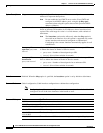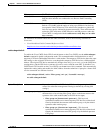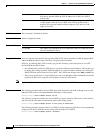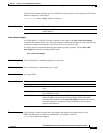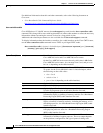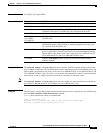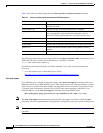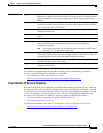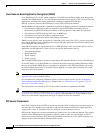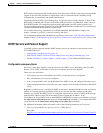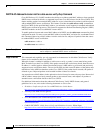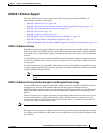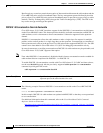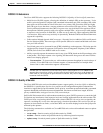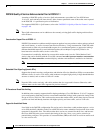
1-46
Cisco uBR7200 Series Universal Broadband Router Software Configuration Guide
OL-2239-05
Chapter1 Overview of Cisco uBR7200 Series Software
Supported Software Features for the Cisco uBR7200 Series
Cisco Network-Based Application Recognition (NBAR)
Cisco IOS Release 12.1(10)EC added support for Cisco IOS Network-Based Application Recognition
(NBAR). The NBAR feature is a new classification engine that can recognize a wide variety of network
applications, including Web-based applications, client/server applications, and other
difficult-to-classify protocols that dynamically assign TCP or UDP port numbers.
NBAR enhances existing methods of application-recognition by adding several new classification features:
• Classification of applications that use statically assigned TCP/UDP port numbers, that use
dynamically assigned TCP/UDP port numbers, or that use protocols other than TCP and UDP
• Classification of HTTP traffic by URL, host, or MIME type
• Classification of Citrix ICA traffic by application name
• Classification of application traffic using subport information
NBAR can also classify static port protocols. Although access control lists (ACLs) can also be used for
this purpose, NBAR is easier to configure and can provide other options and classification statistics that
are not available when using ACLs.
After NBAR recognizes an application, the Cisco uBR7200 series router can invoke specific services
appropriate for that application. These services can provide QoS features such as:
• Guaranteed bandwidth
• Bandwidth limits
• Traffic shaping
• Packet coloring
The Cisco IOS NBAR feature can also be used to detect and respond to denial-of-service and other types
of network attacks. Cisco IOS NBAR uses a protocol description language module (PDLM) to define
the rules by which the NBAR processes recognize an application. New PDLM definitions can usually
be loaded without the need for a Cisco IOS software upgrade or a router reboot, allowing for a rapid
response to discovered attacks.
Note For basic information on configuring and using the Cisco IOS NBAR feature, see the Network-Based
Application Recognition feature module.
For information on configuring NBAR for Quality of Service (QoS) control, see the “Configuring
Network-Based Application Recognition” chapter of the Cisco IOS Release 12.2 Quality of Service
Solutions Configuration Guide.
These documents are available on Cisco.com and the Customer Documentation CD-ROM.
Tip Cisco.com also contains a technical note, Using Network-Based Application Recognition and Access
Control Lists for Blocking the Code Red Worm, that provides information on using NBAR to block
denial-of-service attacks. Registration and login is required to view this document.
RTP Header Compression
Real-Time Transport Protocol (RTP) is the Internet Standard (RFC 1889) protocol for the transport of
real-time data. It is intended to provide end-to-end network transport functions for applications that
support audio, video, or simulation data over multicast or unicast network services.
RTP provides support for real-time conferencing of groups of any size within the Internet. This support
includes source identification and support for gateways such as audio and video bridges as well as
multicast-to-unicast translators. RTP offers QoS feedback from receivers to the multicast group, and
support for the synchronization of different media streams.



